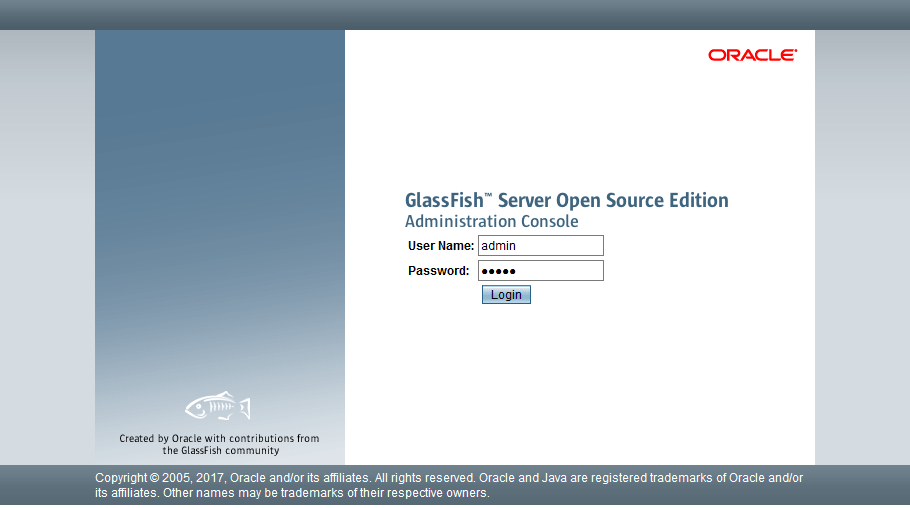How To Install GlassFish on AlmaLinux 9

In this tutorial, we will show you how to install GlassFish on AlmaLinux 9. For those of you who didn’t know, GlassFish is a free, open-source server for deploying JAVA based applications. It also provides both web and CLI-based administration consoles for easier configuration and management of your Java applications and their respective components.
This article assumes you have at least basic knowledge of Linux, know how to use the shell, and most importantly, you host your site on your own VPS. The installation is quite simple and assumes you are running in the root account, if not you may need to add ‘sudo‘ to the commands to get root privileges. I will show you the step-by-step installation of the GlassFish on AlmaLinux 9. You can follow the same instructions for CentOS and Rocky Linux.
Prerequisites
- A server running one of the following operating systems: AlmaLinux 9.
- It’s recommended that you use a fresh OS install to prevent any potential issues.
- SSH access to the server (or just open Terminal if you’re on a desktop).
- A
non-root sudo useror access to theroot user. We recommend acting as anon-root sudo user, however, as you can harm your system if you’re not careful when acting as the root.
Install GlassFish on AlmaLinux 9
Step 1. First, let’s start by ensuring your system is up-to-date.
sudo dnf clean all sudo dnf install epel-release sudo dnf update
Step 2. Installing Java.
By default, Java is available on the AlmaLinux 9 base repository. Now install Java by running the following command below:
sudo dnf install java-11-openjdk-devel
Verify the Java installation:
java -version
Step 3. Installing GlassFish on AlmaLinux 9.
First, create a user for Glassfish:
sudo useradd -s /sbin/nologin glassfish
By default, GlassFish is not available on the AlmaLinux 9 base repository. Now run the following command to download the latest stable version of the GlassFish from the official page to your AlmaLinux system:
wget https://download.eclipse.org/ee4j/glassfish/glassfish-6.2.5.zip
Next, extract your downloaded file with the command below:
sudo unzip -d /opt/ glassfish-6.2.5.zip
Give the ownership and permissions to the GlassFish user with the following command:
sudo chown -R glassfish:glassfish /opt/glassfish6/
Step 4. Create Systemd GlassFish.
Now we create GlassFish systemd daemon file to manage GlassFish service:
nano /usr/lib/systemd/system/glassfish.service
Add the following file:
[Unit] Description = GlassFish Server v6.2.5 After = syslog.target network.target [Service] User = glassfish ExecStart = /usr/bin/java -jar /opt/glassfish6/glassfish/lib/client/appserver-cli.jar start-domain ExecStop = /usr/bin/java -jar /opt/glassfish6/glassfish/lib/client/appserver-cli.jar stop-domain ExecReload = /usr/bin/java -jar /opt/glassfish6/glassfish/lib/client/appserver-cli.jar restart-domain Type = forking [Install] WantedBy = multi-user.target
Save changes and exit the file, then start and enable the GlassFish service using the commands below:
sudo systemctl daemon-reload sudo systemctl start glassfish sudo systemctl enable glassfish
By default, GlassFish has no password. For more security, you need to set a password for the GlassFish admin user. To do this, run the following command:
sudo /opt/glassfish6/bin/asadmin --port 4848 change-admin-password
After changing the admin password, we now need to enable the “secure admin” feature. It will ask for the credentials we added earlier:
sudo /opt/glassfish6/bin/asadmin --port 4848 enable-secure-admin
Finally, restart your GlassFish on AlmaLinux 9 to apply the changes:
sudo systemctl restart glassfish
Step 5. Configure Firewall.
By default, GlassFish listens on ports 4848 and 7080. If any firewall is installed and configured on your server, then you will need to allow both ports via firewalld. You can allow them with the following command:
sudo firewall-cmd --permanent --add-port={4848,8080,8181}/tcp
sudo firewall-cmd --reload
You can verify by listing the current firewall settings:
sudo firewall-cmd --permanent --list-all
Step 6. Accessing GlassFish Web Interface.
Once successfully installed, open your web browser and access the GlassFish default page using the URL http://your-server-ip:4848. You will be redirected to the GlassFish login page:

Congratulations! You have successfully installed GlassFish. Thanks for using this tutorial for installing the GlassFish on your AlmaLinux 9 system. For additional help or useful information, we recommend you check the official GlassFish website.